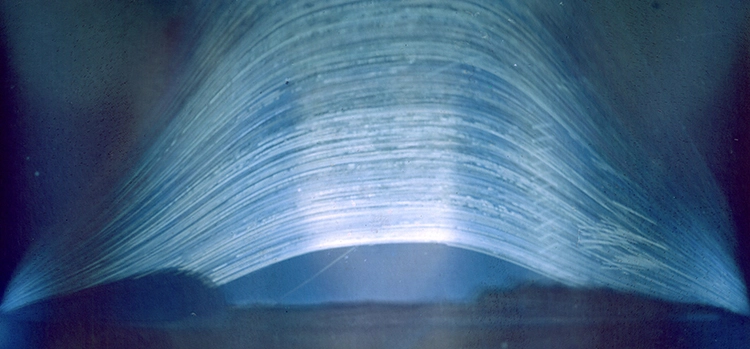
The closing ceremonies for the London 2012 Summer Olympics took place in August 2012. A masters student in fine arts at the University of Hertfordshire in the United Kingdom launched a project just one week after the athletes dispersed. Regina Valkenborgh used an aluminum beer can, duct tape, and light-sensitive photographic paper to make a pinhole camera. The camera was left pointing upwards on the side of the university’s Bayfordbury Observatory, where it had been for eight years and one month. The camera was ultimately removed this autumn by David Campbell, the observatory’s Principal Technical Officer. He uncovered the world’s longest-exposure photograph within, which depicted eight years of sun trajectories across the sky.

Valkenborgh was interested in employing ancient technology to capture photos as a Fine Art student. She experimented with pinhole cameras and the camera obscura technique. Her camera made out of a beer can is an extreme example of this method. A tiny opening permits light from the outside world to flow through a light-tight box (or container). The outside world’s vision is reversed and projected inside the dimly lit chamber. Early photographers, like Valkenborgh, discovered to capture this optical phenomena by putting light-sensitive film behind a tiny pinhole. While many pinhole cameras need exposure times of several seconds or longer, the beer-can camera’s eight-year exposure, dubbed Days in the Sun, is the world’s longest.
The photographic paper within the camera captured what is known as a solargraph, displaying the passage of the sun in arcs across the sky, throughout the eight years it was fastened to the observatory. The Summer Solstice has the highest arc, while the Winter Solstice has the lowest. Because of the overcast weather, several days left minimal trace on the paper. Only the sun’s brilliant light is seen, thus no passing people or trees are visible. According to the University’s statement, it’s possible that the paper captured all 2,953 sun traces.
Valkenborgh’s camera was never intended to be exposed for eight years. Fortunately, the portable observatory that carried it always returned to the same orientation. According to a tweet from the observatory, the camera captured the view from where it sat for a period of time equal to 4% of the history of photography. As a result of its improbable (and unanticipated) survival, the camera made history. While Valkenborgh’s solar image holds the record for the longest recorded exposure of an image, other photographers using pinhole cameras are hoping to break it. Jonathon Keats installed his Millennium Cameras—which have 1,000-year shutter speeds—over Lake Tahoe in 2015 for what feels like an eternity. The allure and difficulty of pinhole cameras and long-exposure photography for many people is capturing a continually changing world.
Regina Valkenborgh, a master’s student, made a pinhole camera out of an aluminum beer can, duct tape, and light-sensitive photographic paper in 2012. She positioned it against the side of the University of Hertfordshire’s Bayfordbury Observatory, where it remained forgotten until this year.
“Days in the Sun” is possibly the world’s longest-exposure photograph, with up to 2,953 arcs of the sun’s trip across the sky recorded.
